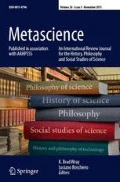Notes
My italics. “Lest anybody suppose that, with the Pythagoreans, we have asserted the Earth’s motion rashly, he will find here strong evidence in [our] explanation of the circles. The arguments by which the natural philosophers try above all to establish the Earth’s immobility rest for the most part upon appearances. But all their arguments are the first to collapse here, since we overturn the Earth’s immobility also by means of an appearance” (“Proinde ne quis temere mobilitatem telluris asseverasse cum Pythagoricis nos arbitretur, magnum quoque et hic argumentum accipiet in circulorum declaratione. Etenim quibus Physiologi stabilitatem eius astruere potissime conantur, apparentiis plerumque innituntur; quae omnia hic in primis corrunt, cum etiam propter apparentiam versemus eandem” [101; 531n151]).
“Tycho Brahe was a hereditary nobleman rather than one who had been recently ennobled. His position was not unlike that of a traditional feudal lord” (236 and further, 237–243).
References
Achillini, Alessandro. 1498. De orbibus. Bologna.
Anderson, Katharine. 2005. Predicting the weather: Victorians and the science of meteorology. Chicago: University of Chicago Press.
Barker, Peter. 2011. The reality of Peurbach’s orbs. In Change and continuity in early modern cosmology, ed. Patrick J. Boner, 7–32. New York: Springer.
Brudzewo, Albert of. 1495. Commentariolum super theoricas novas planetarum Georgii Purbachii in Studio generali Cracoviensi per Albertum de Brudzewo diligenter corrogatum a.d. 1482. Uldericus Scinzenzeler: Milan. Ed. L. Birkenmajer. 1900. Cracow: Universitas Jagellonica.
Celenza, Christopher. 1999. Pythagoras in the renaissance: The case of Marsilio Ficino. Renaissance Quarterly 52: 667–711.
Clark, William. 2006. Academic charisma and the origins of the research university. Chicago: University of Chicago Press.
Funkenstein, Amos. 1975. The dialectical preparation for scientific revolutions. In The Copernican achievement, ed. Robert S. Westman, 165–203. Berkeley and Los Angeles: University of California Press.
Galilei, Galileo. 1967 [1632]. Dialogue concerning the two chief world systems. Berkeley and Los Angeles: University of California Press.
Glogów, John of. 1506. Introductorium compendiosum in tractatam sphere materialis. Cracow.
Goldstein, Bernard R. 2002. Copernicus and the origin of his heliocentric theory. Journal for the History of Astronomy 33: 219–235.
Golinski, Jan. 2007. British weather and the climate of enlightenment. Chicago: University of Chicago Press.
Grafton, Anthony. 1997. Commerce with the classics. Ann Arbor, MI: University of Michigan Press.
Jardine, Nicholas. 1982. The significance of the Copernican orbs. Journal for the History of Astronomy 13: 168–194.
Manfredonia, Franciscus Capuanus de. 1495. Theoricae novae planetarum Georgii purbachii astronomi celebratissimi. Venice: Simon Bevilaqua.
McCormick, Ted. 2009. William Petty and the ambitions of political arithmetic. New York: Oxford University Press.
Mirandola, Giovanni Pico della. 1496. Disputationes adversus astrologiam divinatricem. Venice: Benedictus Hectoris.
Regiomontanus, Ioannes. 1496. Epytoma Ioannis de Monte Regio in Almagestum Ptolomei. Venice: J. Hamman de Landoia.
Rosen, Edward. 1975. Copernicus’ spheres and epicycles. Archives Internationales d’Histoire des Sciences 25: 82–92.
Rosen, Edward. 1976. Reply to N. Swerdlow. Archives Internationales d’Histoire des Sciences 26: 301–304.
Swerdlow, Noel. 1973. The derivation and first draft of Copernicus’s planetary theory. Proceedings of the American Philosophical Society 117: 423–512.
Swerdlow, Noel M. 1976. Pseudodoxia Copernicana. Archives Internationales d’Histoire des Sciences 26: 108–158.
Westman, Robert S. 2012. Weighing extraordinary phenomena: Giovanni Battista Riccioli on novas and comets. In Novas y Cometas entre 1572 y 1618. Revolución cosmológico y renovación política y religiosa, ed. Miguel Á. Granada, 333–352. Barcelona: Publicacion i Edicions de la Universitat de Barcelona.
Author information
Authors and Affiliations
Corresponding author
Rights and permissions
About this article
Cite this article
Barker, P., Dear, P., Christianson, J.R. et al. Why was Copernicus a Copernican?. Metascience 23, 203–223 (2014). https://doi.org/10.1007/s11016-013-9841-z
Published:
Issue Date:
DOI: https://doi.org/10.1007/s11016-013-9841-z

